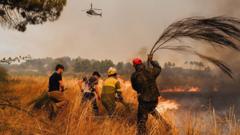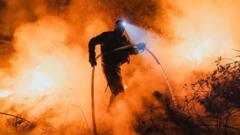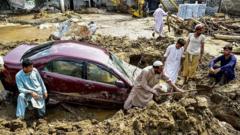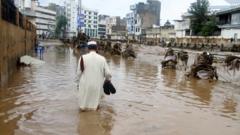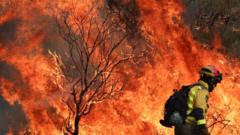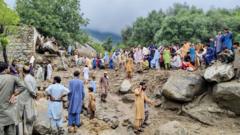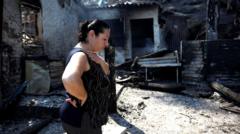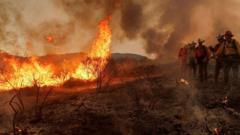The World Health Organization (WHO), alongside the World Meteorological Organization, has released a significant report indicating that a rise in workplace heat stress is inevitable due to climate change. With increasing heatwaves, there is an urgent need for protective measures for vulnerable worker groups, primarily in construction and agriculture.
WHO Issues Urgent Call for Workplace Heat Stress Protection Amid Rising Temperatures
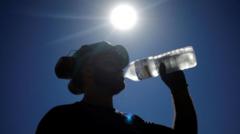
WHO Issues Urgent Call for Workplace Heat Stress Protection Amid Rising Temperatures
A new WHO report highlights the growing risks of heat stress for workers due to climate change, urging collaboration among governments, employers, and workers for effective adaptation strategies.
The World Health Organization (WHO), alongside the World Meteorological Organization, recently highlighted urgent concerns regarding heat stress as climate change leads to more frequent and severe heatwaves. The collaborative report underscores the rising risks for millions of workers worldwide and emphasizes the need for protective measures, particularly for those in high-risk sectors like construction and agriculture.
Rüdiger Krech, the WHO's director of environment, climate and health, describes the findings as essential reading for policymakers and stakeholders, marking the first time since 1969 that the organization has specifically addressed this issue. The report conveys that exposure to extreme heat, particularly when body temperatures exceed 38°C, can result in severe health consequences, including heatstroke, dehydration, and kidney failure.
Recent data shared by the World Meteorological Organization supports the claims, indicating that the past decade has recorded the highest global temperatures, with projections for 2024 indicating it could become the hottest year on record. In many regions of Europe, temperatures exceeding 40°C are no longer anomalies, while in parts of Africa and the Middle East, temperatures could soar to 50°C.
The effects of heatwaves extend beyond health risks, adversely affecting productivity. The report reveals that productivity drops by 2% for each degree rise above 20°C. Furthermore, the risk of workplace accidents significantly increases in high temperatures, as seen during the 2023 heatwave in Europe, when Switzerland experienced a 7% rise in incidents when temperatures surpassed 30°C.
In response to the ongoing challenges, some European countries are already implementing adaptive measures. For instance, the Italian government recently enforced an emergency decree to prevent work during peak heat periods. Similarly, in Switzerland, local governments paused construction work during high temperatures, a decision welcomed by labor unions emphasizing worker safety.
The WHO's report stresses that this issue also extends to vulnerable populations such as the elderly and young children who face heightened risks during heat extremes. In Germany, for example, schools can declare "Hitzefrei," allowing students to leave when temperatures reach critical levels. However, reduced occurrence of such temperatures in the past has led to teachers grappling with the need for continued education, prompting calls for improvements in school infrastructure, including better ventilation and air conditioning.
Krech notes the importance of collaborative adaptation strategies, advocating for consultations between governments, employers, health authorities, and other stakeholders. He raises concerns about financial constraints, urging decision-makers to consider the long-term costs of inaction, as unaddressed heat-related health impacts could lead to significant productivity losses.
The WHO's report represents a pivotal moment in awareness and action concerning heat stress in the workplace, serving as a clarion call for comprehensive measures to ensure the safety and well-being of workers in an increasingly hot and unpredictable climate.

